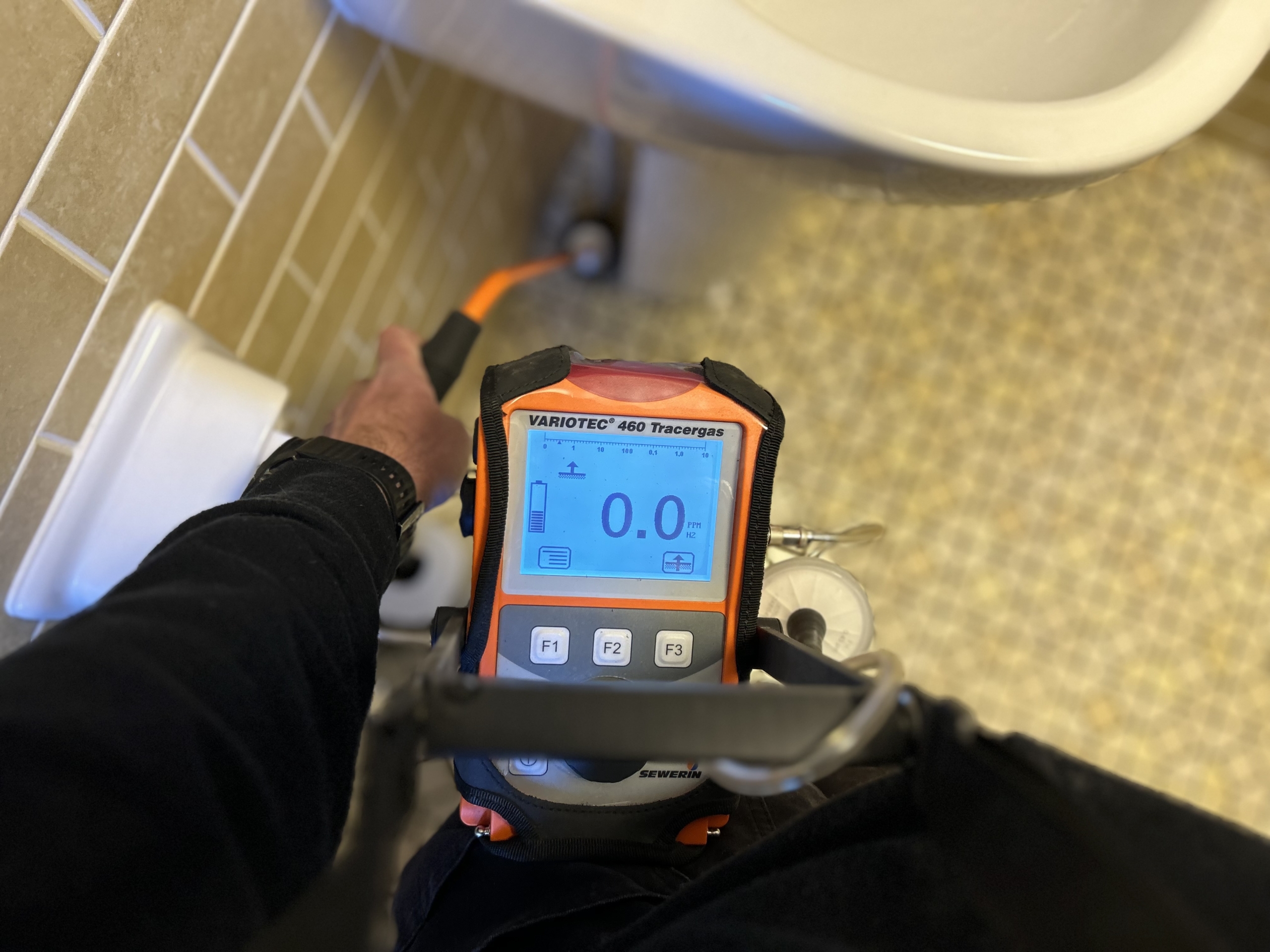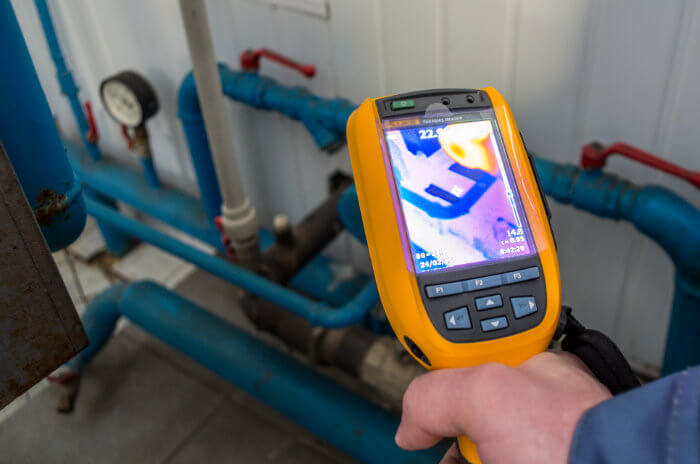Water Leak Detection: Exactly How to Identify and Deal With Leaks Before They Trigger Damages
Water Leak Detection: Exactly How to Identify and Deal With Leaks Before They Trigger Damages
Blog Article
Innovative Solutions for Very Early Discovery of Water Leaks in Structures and Framework
As the integrity of buildings and framework is extremely important, the challenge of early detection of water leaks has actually stimulated cutting-edge remedies that promise to change the way we protect against potential damages. From innovative leakage discovery technologies to the deployment of IoT sensors for real-time monitoring, the landscape of leak prevention is advancing quickly. Artificial intelligence algorithms offer a peek right into the future of leakage prediction, while thermal imaging provides a non-intrusive method for pinpointing concealed leakages. Automated water circulation analysis systems are reshaping just how leakages are determined and attended to, paving the method for an aggressive strategy to water leakage detection. Each of these solutions holds the crucial to making certain the dependability and durability of our constructed atmosphere, motivating a change in the direction of a more sustainable and efficient future.
Advanced Leakage Discovery Technologies
Advanced leakage detection modern technologies, outfitted with innovative sensing units and algorithms, play a critical function in swiftly determining and determining water leakages in different settings. These innovations use a combination of acoustic, thermal, and electro-magnetic picking up methods to spot leaks precisely. Acoustic sensing units spot the noise of getting away water, permitting accurate localization of the leak resource. Thermal imaging spots temperature level adjustments triggered by water leakage, offering an additional effective approach for leak recognition. Electro-magnetic sensors can identify modifications in magnetic fields triggered by water, using yet an additional layer of leak detection ability.

IoT Sensors for Real-Time Surveillance
In the world of modern water leak detection, the combination of IoT sensors for real-time tracking stands for an essential development in enhancing aggressive leak discovery abilities. These sensing units supply continual surveillance of water supply, providing real-time information on water flow rates, pressure variations, and temperature level adjustments. By leveraging IoT modern technology, these sensors can detect also the smallest abnormalities in water use patterns, enabling early identification of possible leaks before they intensify into significant problems.
IoT sensing units send data to a central system, where innovative formulas examine the information and generate alerts or notices when irregularities are found. This real-time tracking capacity permits home proprietors or center supervisors to immediately address leakages, lessening water damage, reducing repair work prices, and saving water sources.
Additionally, IoT sensors can be incorporated with structure monitoring systems, permitting computerized responses to identified leakages, such as shutting down water valves or turning on pumps to minimize the impact of leaks. Generally, the application of IoT sensing units for real-time monitoring dramatically improves the effectiveness and efficiency of water leakage discovery in buildings and framework.
Artificial Intelligence Algorithms for Leakage Prediction

One key benefit of using maker discovering for leakage prediction is its capability to continually discover and boost its accuracy in time. As even more information is gathered and fed right into the formula, it can fine-tune its forecasts and adjust to transforming problems, ultimately boosting the integrity of leakage detection systems.
Furthermore, machine learning algorithms can aid in identifying subtle signs of leaks that may go unnoticed by standard surveillance approaches. water leak detection. By analyzing complicated information embed in real-time, these algorithms can give very early warnings and alerts, enabling punctual intervention and preventative upkeep to mitigate potential water damages and linked expenses
Making Use Of Thermal Imaging for Leakage Discovery
Thermal imaging modern technology provides an appealing approach for detecting water leaks in numerous systems and frameworks. By making use of infrared radiation and temperature level variances, thermal imaging electronic cameras can recognize concealed leaks that are not conveniently noticeable to the nude eye.
One of the vital benefits of thermal imaging for leak detection is its non-intrusive nature. Unlike conventional techniques that might call for damaging into walls or floors to find leakages, thermal imaging enables non-destructive testing. This not just conserves time and decreases expenses however additionally minimizes interruption to the building or infrastructure being analyzed. In addition, thermal imaging can promptly scan huge locations, supplying a comprehensive overview of prospective leakage sources in a prompt fashion. In general, making use of thermal imaging modern technology boosts the effectiveness and accuracy of water leak detection, making it a useful tool for keeping the stability of buildings and frameworks.
Automated Water Circulation Analysis Systems
Just how can automated water flow analysis systems revolutionize the discovery and monitoring of leakages in different systems and facilities? Automated water flow evaluation systems supply a positive approach to leakage detection by continually keeping track of water circulation prices and patterns. By establishing baseline data, these systems can quickly determine discrepancies that might suggest a leak, making it possible for punctual intervention to stop extensive damage.
These systems utilize advanced formulas to examine real-time data and supply prompt informs when anomalies are identified, permitting site web speedy action to be taken. In addition, computerized water circulation evaluation systems can be integrated with structure administration systems or IoT platforms, enhancing general effectiveness and allowing remote monitoring capacities.
Furthermore, the information accumulated by these systems can be utilized for predictive my site maintenance objectives, helping to determine possible weak points in the infrastructure prior to leakages take place. In general, the implementation of computerized water circulation evaluation systems can significantly improve leakage discovery and management practices, ultimately resulting in cost financial savings, lowered water wastefulness, and increased sustainability in buildings and infrastructure.

Conclusion
In conclusion, the combination of sophisticated leakage discovery modern technologies, IoT sensors, artificial intelligence algorithms, thermal imaging, and automatic water flow evaluation systems uses ingenious services for early detection of water leakages in buildings and infrastructure. These modern technologies make it possible for real-time tracking, forecast of leakages, and efficient detection techniques to stop water damage and waste. Executing these remedies can aid in preserving the stability and sustainability of water supply in different setups.
Report this page